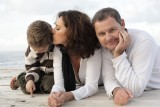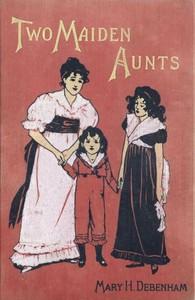Read this ebook for free! No credit card needed, absolutely nothing to pay.
Words: 75148 in 18 pages
This is an ebook sharing website. You can read the uploaded ebooks for free here. No credit cards needed, nothing to pay. If you want to own a digital copy of the ebook, or want to read offline with your favorite ebook-reader, then you can choose to buy and download the ebook.
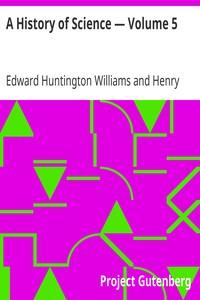

: A History of Science — Volume 5 by Williams Edward Huntington Williams Henry Smith - Science History
BOOK V
The founding of the British Museum, p. 4--Purchase of Sir Hans Sloane's collection of curios by the English government, p. 4--Collection of curios and library located in Montague Mansion, p. 5--Acquisition of the collection of Sir William Hamilton, p. 5--Capture of Egyptian antiquities by the English, p. 5--Construction of the present museum building, p. 6--The Mesopotamian department, p. 8--The Museum of Natural History in South Kensington, p. 8--Novel features in the structure of the building, p. 9--Arrangement of specimens to illustrate evolution, protective coloring, etc., p.-- --Exhibits of stuffed specimens amid their natural surroundings, p. 10--Interest taken by visitors in the institution, p. 12.
The Royal Society, p. 14--Weekly meetings of the society, p. 15--The tea before the opening of the lecture, p. 15--Announcement of the beginning of the lecture by bringing in the great mace, p. 16--The lecture-room itself, p. 17--Comparison of the Royal Society and the Royal Academy of Sciences at Berlin, p. 18--The library and reading-room, p. 19--The busts of distinguished members, p. 20--Newton's telescope and Boyle's air-pump, p. 21.
The founding of the Royal Institution, p. 29--Count Rumford, p. 30--His plans for founding the Royal Institution, p. 32--Change in the spirit of the enterprise after Rumford's death, p. 33--Attitude of the earlier workers towards the question of heat as a form of motion, p. 34--Experiments upon gases by Davy and Faraday, p. 35--Faraday's experiments with low temperatures, p. 39--Other experiments to produce lower temperature, p. 39--Professor De-war begins low-temperature research, p. 39--His liquefaction of hydrogen, p. 43--Hampson's method of producing low temperatures, p. 44--Dewar's invention of the vacuum vessel, p. 53--Its use in retaining liquefied gases, p. 54--Changes in physical properties of substances at excessively low temperatures, p. 56--Magnetic phenomena at low temperatures, p. 56--Changes in the color of substances at low temperatures, p. 57--Substances made luminous by low temperatures, p. 58--Effect of low temperatures upon the strength of materials, p. 59--Decrease of chemical activity at low temperatures, p. 60--Olzewski's experiments with burning substances in liquid oxygen, p. 61--Approach to the absolute zero made by liquefying hydrogen, p. 69--Probable form of all matter at the absolute zero, p. 70--Uncertain factors that enter into this determination, p. 71.
Sir Norman Lockyer and Spectroscopic Studies of the Sun and Stars, p. 73--Observations made at South Kensington by Sir Norman and his staff, p. 74--His theories as to the influence of sun-spots and terrestrial weather, p. 75--Spectroscopic studies of sun-spots, p. 76--Studies of the so-called reverse lines of the spectrum, p. 78--Discovery of the new star in the constellation of Perseus, p. 80--Spectroscopic studies of the new star, p. 81--Professor Ramsay and the new gases, p. 82--University College in London, p. 83--Professor Ramsay's laboratory and its equipment, p. 84--The discovery of argon, p. 86--Professor Ramsay's work on krypton, neon, and zenon, p. 87--Discoveries of new constituents of the atmosphere, p. 88--Interesting questions raised by these discoveries, p. 89--Professor J. J. Thomson and the nature of electricity, p. 92--Study of gases in relation to the conduction of electricity, p. 93--Electricity regarded as a form of matter, p. 97--Radio-activity, p. 97--The nature of emanations from radio-active bodies, p. 10a--The source of energy of radioactivity, p. 106--Radio-activity and the structure of the atom, p. 108--Effect of radio-activity upon heat-giving life of the sun and the earth, p. 111.
The "dream city" of Jena, p. 145--The old market-place, p. 147--The old lecture-halls of the university, p. 148--Ernst Haeckel, p. 151--His discoveries of numerous species of radiolarians, p. 153--The part played in evolution by radiolarians, p. 156--Haeckel's work on morphology, and its aid to Darwinian philosophy, p. 156--Freedom of thought and expression in the University of Jena, p. 157--Haeckel's laboratory, p. 160--His method of working, p. 161--His methods of teaching, p. 164--The import of the study of zoology, p. 166--Its bearing upon evolution, p. 168--The present status of Haeckel's genealogical tree regarding the ancestry of man, p. 171--Dubois's discovery of the skull of the ape-man of Java, p. 173--Its close resemblance to the skull of the ape, p. 173--Man's line of descent clearly traced by Haeckel, p. 175--The "missing link" no longer missing, p. 176.
The Boulevard Pasteur, p. 179--The Pasteur Institute, p. 180--The tomb of Pasteur within the walls, p. 181--Aims and objects of the Pasteur Institute, p. 182--Antirabic treatment given, p. 183--Methods of teaching in the institute, p. 185--The director of the institute and his associates, p. 185--The Virchow Institute of Pathology, p. 186--Studies of the causes of diseases, p. 187--Organic action and studies of cellular activities, p. 188--The discoveries of Rudolph Virchow, p. 188--His work in pathology, p. 189--Character of the man, his ways of living and working, p. 189--His methods of lecturing and teaching, p. 191--The Berlin Institute of Hygiene, p. 193--Work of Professor Koch as carried on in the institute, p. 194--Work of his successors in the institute, p. 195--Investigations in hygiene, p. 196--Investigations of the functions of the human body in their relations to everyday environment, p. 197--The Museum of Hygiene, p. 198--Studies in methods of constructing sewerage systems in large cities, p. 199--Studies in problems of ventilation, p. 200.
The ever-shifting ground of scientific progress, p. 203--Solar and telluric problems, p. 205--Mayer's explanation of the continued heat of the sun, p. 206--Helmholtz's suggestion as to the explanation, p. 207--The estimate of the heat-giving life of the sun by Lord Kelvin and Professor Tait, p. 208--Lockyer's suggestion that the chemical combination of elements might account for the sun's heat, p. 209--Computations as to the age of the earth's crust, p. 210--Lord Kelvin's computation of the rigidity of the telluric structure, p. 211--Estimates of the future life of the earth, p. 212--Physical problems, p. 213--Attempts to explain the power of gravitation, p. 214--The theory of Le Sage, p. 214--Speculations based upon the hypothesis of the vortex atom, p. 216--Lord Kelvin's estimate of the vortex theory, p. 217--Attempted explanation of the affinity of atoms, p. 217--Solubility, as explained by Ostwald and Mendeleef, p. 218--Professor Van 't Hoof's studies of the space relations of atoms, p. 219--Life problems, p. 220--Question as to living forms on other worlds besides our own, p. 21 x--The question of the "spontaneous generation" of living protoplasm, p. 222--The question of the evolution from non-vital to vital matter, p. 223--The possibility of producing organic matter from inorganic in the laboratory, p. 224--Questions as to the structure of the cell, p. 225--Van Beneden's discovery of the centrosome, p. 226--Some problems of anthropology, p. 227.
The scientific attitude of mind, p. 2 30--Natural versus supernatural, p. 233--Inductive versus deductive reasoning, p. 235--Logical induction versus hasty generalization, p. 239--The future of Darwinism, p. 241.
A LIST OF SOURCES
A HISTORY OF SCIENCE--BOOK V
ASPECTS OF RECENT SCIENCE
Free books android app tbrJar TBR JAR Read Free books online gutenberg
More posts by @FreeBooks
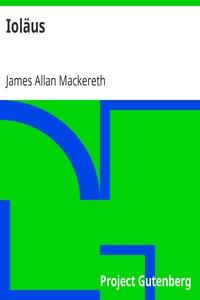

: The Humors of Falconbridge A Collection of Humorous and Every Day Scenes by Falconbridge - American wit and humor
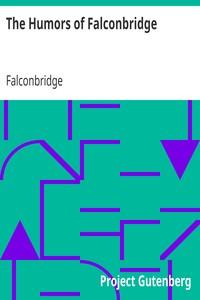

: The Foreign Hand Tie by Garrett Randall Barberis Illustrator - Science fiction; Spy stories; Telepathy Fiction Science Fiction



